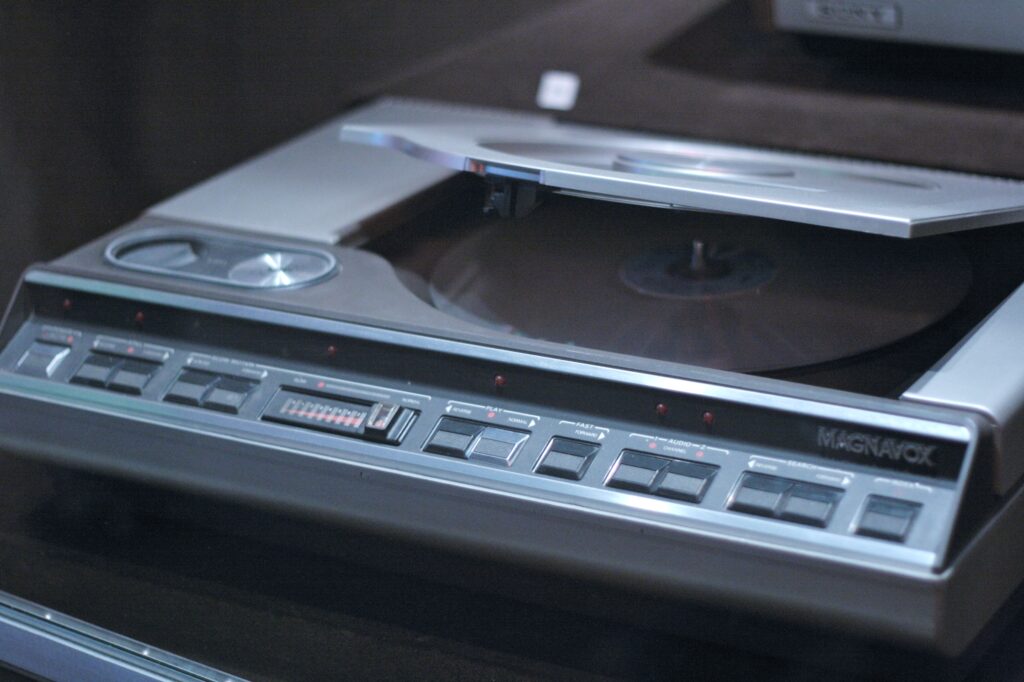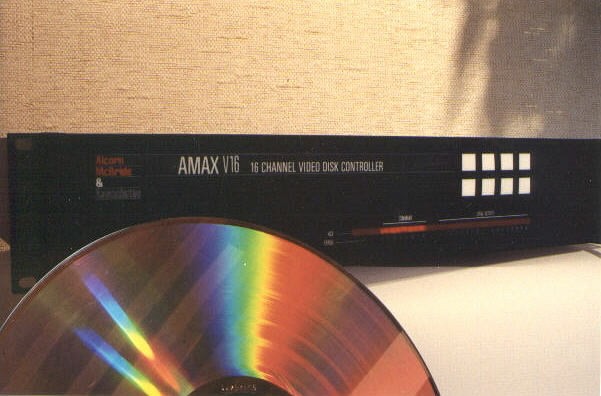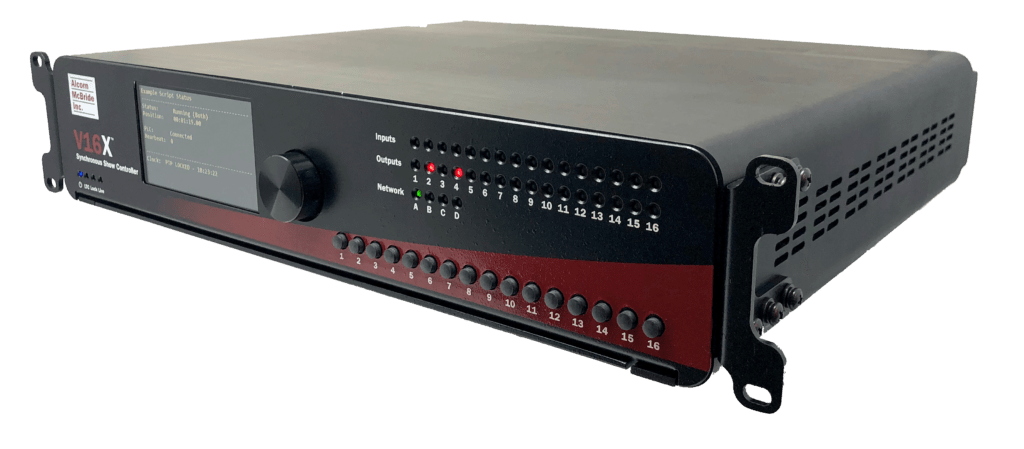Find and own what makes you and your company special
by Scott Harkless
Fun fact: Did you know that Laserdisc players came out four years before CDs? It’s true! They first shipped in 1978, onlytwo years after the launch of VHS and four years before CDs were a thing. This isn’t common knowledge mostly because VHS became the popular choice for distributing content to consumers in the 1980s. It did the job well enough by storing feature-length movies, allowing people to record episodes of MacGyver, and coincidentally the VCR slot was also the perfect size to insert a peanut butter and jelly sandwich.
As we all know, what works well for the consumer world doesn’t necessarily work well in themed entertainment. There’s just something about the concept of “Be Kind, Rewind!” that didn’t fit with our incessant need to run attractions nonstop, day after day, for years on end, with as little maintenance as possible. For that reason, film projectors continued to be the primary method for presenting visual experiences in attractions for quite some time.
It wasn’t until the late 1980s that digital alternatives like Laserdisc players started to gain popularity in our industry. They presented a low-cost, low-maintenance alternative to the more complex film projector systems. There was a hiccup though. At the time, there were no control solutions on the market that enabled system integrators to synchronize more than one of these players – something theme park attractions needed to do often!
Then along comes this spirited group of theme park engineers with experience designing custom control systems that do oddly specific things for theme park attractions. Unfortunately, I wasn’t there at the time because I was obviously too busy watching MacGyver, eating PB&J, and getting dragged to the VCR repair shop by my very disappointed mother. In my imagination, though, what happened next resembles a stereotypical ‘80s montage of engineers pointing at chalkboards, drawing schematics, soldering circuit boards, and high-fiving each other to the tune of “Eye of the Tiger.” Although it probably happened a little differently in real life, the V16 16-channel Laserdisc Controller was born, and Alcorn McBride suddenly became known as the industry experts on “synchronized A/V.” We had officially established ourselves as a niche company.
A niche company is geared toward a very specific aspect of a larger market. They understand their strengths, respect their limitations, and know how to apply laser-like focus to their specialty…whatever it may be!

A vintage Magnavox Laserdisc player Photo by Marcin Wichary, courtesy of Creative Commons.
There are numerous advantages to operating a business this way. When a company consciously decides that they want to be the experts at doing a specific thing, it provides their staff with a crystal-clear mission. Product designers and engineers know exactly what they are trying to create and are motivated to work hard to make their company the best at what they do. Marketing and sales team members can craft a very specific message to share the company mission and devote time to the customers that will benefit most from that message. The ability to fine- tune the company’s specialty also gives owners and leaders some control over how small or large they want the company to be, allowing the organization to operate efficiently and profitably, minimizing financial risk.
Owning your niche
More importantly, this type of specialization also makes it clear to your customers what you do and why you do it. They immediately think of your company (and know exactly who to call) when they are facing a particular kind of challenge or discussing a relevant aspect of design. This is the power of brand awareness for a niche company. Simply owning your niche and doing your job well builds powerful brand awareness in your industry.
In themed entertainment, our industry’s collective mission is to deliver unique experiences that visitors can’t find anywhere else. The challenge is that the same “uniqueness” that makes attractions so successful is also the very thing that tends to make them very challenging to build! We all know that these projects also have special considerations when it comes to innovation, schedule, budget, and lifespan. And in my opinion, it is just these factors that make niche companies the ideal partners for building the best attractions. They understand the nuances; they offer skills and solutions that accommodate them. Their focused specialization means attraction designers can rest a little easier knowing that their project will be treated with the attention and priority it needs to be successful.

Alcorn McBride’s original V16 show controller, from 1988. Courtesy Alcorn McBride.

The current V16x version. Courtesy Alcorn McBride
For Alcorn McBride specifically, the V16 was only the beginning of our journey as a niche company. It may have started with Laserdisc players, but we quickly realized that our mission is to create the best ecosystem of tools that are used to bring show systems to life. This drives our engineers to research and deploy technologies like IEEE-1588 synchronization, network audio distribution, fiber-optic transmission of video, and communication protocols that work under-the-hood of our products to make that possible. It’s what steers us toward engineering purpose-built, embedded designs that meet the niche needs of these projects and last long enough to keep the attraction running for many years. By making it our mission to take care of these things, the tools we present empower attraction designers to focus on the creative intent of the attraction without worrying about the nitty-gritty details of how it’s all going to work.
Laser focus
Perhaps the philosophies I’ve discussed sound like common sense, but it takes a conscious effort to filter out the noise and keep your eye on the big picture. It’s easy to get distracted and disrupted by what happens day to day. It’s always worth asking a few questions to ensure you’re still on track. Is the company mission clear to both staff and customers? Are you and your co-workers investing your time on things that best serve that mission? Are you engaging the right industry and clients to match your skills and strengths? Are you hiring vendors that meet your specific needs and treat you with the priority and level of service you deserve?
I’ll leave you with one of my favorite Abraham Lincoln quotes: “Whatever you are, be a good one.” Obviously, this applies to each of us as an individual, but I also appreciate how this same philosophy is precisely the reason niche companies are so vital to the success of our industry. And that’s why, when a group of uniquely talented and focused specialists come together on an attraction, the results are likely to be spectacular. • • •






